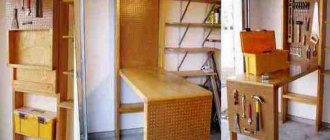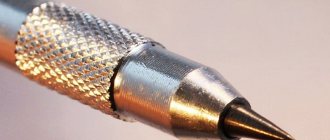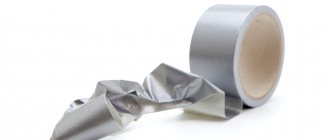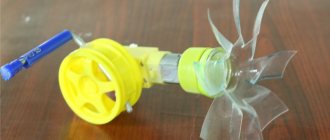Store-bought stew, fish and vegetables in jars cannot compare in quality to home canned food. After all, our own products do not contain chemicals and are much cheaper. True, the annual preparation of supplies is reminiscent of “hell’s kitchen”, since the process of cooking, sterilization and seaming cannot be called otherwise. An autoclave for home canning will help make your work easier and faster - a special closed container made by yourself. From our publication you will learn how best to make this useful device.
Operating principle – pressure cooking
The use of a household autoclave for canning allows you to use industrial heat treatment technology for any raw food in your household. The device shown in the diagram below is a hermetically sealed metal tank with a pressure gauge, valve and air valve. It acts as both a sterilizer and a pressure cooker, reducing two labor-intensive operations to one.
The technology for preparing canned food is taken from the operating instructions for a Belarusian-made autoclave, but it is also valid for home-made units:
- Water is poured into a washed glass container to a level of 1-2 cm from the bottom.
- The initial food product is mixed with spices and other ingredients according to the recipe, after which it is placed in jars and immediately sealed with lids.
- The jars are placed on a tray inside the container in several rows (directly one on top of the other). Then the tank is filled with water to a level of 60-80 mm below the neck. In this case, the lids of the last row of dishes should sink 1-2 cm.
- The autoclave hatch is closed and screwed, then pumped through the valve. The excess pressure inside the chamber should be 1-1.5 Bar (0.1-0.15 MPa).
- The device is heated on a gas stove or in another way until the pressure increases to 3.5-4 Bar. This indicator is maintained for a certain time required for the canned food to be ready (fish sprats need 20 minutes, chicken – half an hour, and beef stew will require at least 40 minutes).
- The heating is turned off and the container cools down to room temperature along with the cans, after which the air is released through the valve and the unit is unloaded.
The factory sterilizer in the photo works without preliminary air pumping
Reference. There are factory models whose design does not include a valve or pre-inflation. But in such conditions, the steam pressure inside the container undermines the lids, so rows of cans have to be fastened with stainless steel ties, and this is unnecessary inconvenience.
The operation of an autoclave for home canning is based on the principle of increasing the boiling point of water by increasing the pressure in the vessel. Under normal conditions, it boils at 98-100 °C. If you create an excess of 1 Bar in a closed tank, then this boundary will move to 120 °C, and at 1.5 Bar - to almost 127 degrees. Thus, accelerated cooking of vegetables (meat) occurs with the simultaneous destruction of all types of bacteria and viruses that survive at normal boiling.
Sterilizing canned food
Cans of meat 12 are installed in two rows (on a stand 13 and a spacer 10 , in which holes are provided for the free circulation of water and steam). To prevent the lids from falling off the jars when heated under internal pressure, pre-made staples 11 .
Factory made can staples. Source: forum.gotovim.ru
2-3 liters of water are poured into the autoclave loaded with jars that have passed the test, closed with a lid and placed for sterilization.
The sterilization process involves heating, direct sterilization and cooling.
Stewed meat is sterilized, calculating the sterilization time using the following formulas:
Where the numerator indicates the time in minutes for warming up, sterilization and temperature reduction (cooling), the denominator indicates the temperature at which sterilization occurs.
The taste and nutritional quality of the stew will be better if it is sterilized for a shorter period of time at a higher temperature than when the sterilization process takes a longer time at a lower temperature.
The temperature in the autoclave is controlled using the pressure gauge (table). Table: determining the temperature inside the autoclave by steam pressure
| Pressure | MPa | 0,105 | 0,125 | 0,149 | 0,175 | 0,206 | 0,242 | 0,280 | 0,326 | 0,376 | 0,432 |
| kgf/cm 2 | 1,033 | 1,23 | 1,46 | 1,72 | 2,02 | 2,37 | 2,75 | 3,2 | 3,69 | 4,24 | |
| Temperature | °C | 100 | 105 | 110 | 115 | 120 | 125 | 130 | 135 | 140 | 145 |
At the end of sterilization, when heating is stopped, cooling begins, which lasts at least 20 minutes.
The lid of the autoclave can be opened when the pressure in it becomes close to atmospheric pressure.
During sterilization, swelling of the lids (false bombing) is acceptable - this indicates the tightness of the jars. After cooling, the lids return to their normal position.
We make a device from a gas cylinder
The most reliable and inexpensive option for a homemade autoclave is a unit made from an old propane cylinder. It is perfectly suited to work under high pressure, since it has a cylindrical shape with rounded ends and metal walls with a thickness of 3 mm or more.
However, you can make the case from other similar products and materials:
- air receiver from a truck or railway car;
- industrial fire extinguisher;
- milk can;
- pipe made of black or stainless steel with thick walls.
Sterilizer made from a reinforced can (photo on the left) and a steel pipe (on the right)
Note. The list contains options with obvious disadvantages. If the receivers are initially designed for pumping air and are close in shape to a cylinder, then the bottom of the can is flat and will have to be reinforced. The same with a regular pipe - the bottom needs to be made massive, otherwise it will be squeezed out during the heating process.
The most practical version of the autoclave is made from a small gas cylinder with a capacity of 24 liters, which can hold 14 half-liter or 5 liter cans. A standard 50 liter vessel is too high, which makes it difficult to use; such a unit cannot be placed on a stove. In this case, home craftsmen practice heating with burners or build in heating elements and make the structure electric, which we will discuss later. How many canned foods will fit in various vessels is shown in the diagram.
Old propane containers are also suitable for other useful homemade crafts, for example, you can use them to cook a barbecue or a long-burning potbelly stove using wood.
Preparing for work
Before making a household autoclave, you need to prepare materials and tools - an angle grinder, a welding inverter and a drill. Now for the metal parts:
- low-carbon steel sheet 10 mm thick - for the manufacture of the mounting flange and cover;
- the same, 5 mm – for the neck;
- sheet 3 mm thick or steel strip - on a pallet for cans;
- pipes for pressure gauge and thermometer (if necessary);
- M12 bolts with nuts – 8 pcs.
You will also need safety and control devices - a pressure gauge and a safety valve, whose purpose is to release steam when critical pressure is reached (on factory models it is set to 5.5 Bar). It is not necessary to install a temperature meter, since the main parameter that needs to be monitored is pressure.
Sterilizer safety features - pressure gauge and safety relief valve
Advice. To avoid making holes in the housing or lid in several places, install a safety group, such as is used for gas and solid fuel boilers in closed-type heating systems, as is done in the photo. Plug the hole for the air vent.
To create excess pressure, a regular valve from a car tube or one designed for tubeless tires must be inserted into the body.
Manufacturing instructions
The simplest autoclave for canning from a gas cylinder, made by our expert, is shown in the drawing. A square flange is used here, because making it with your own hands is much easier than a round one. The pallet consists of steel strips welded from the inside to the side walls.
Important point. The installation location of the thermometer (in the middle of the body) was not chosen by chance. The fact is that food preparation is often done in a garage, summer kitchen or barn. In autumn, these rooms become cold, so the thermometer on the lid begins to lie (the difference is 5–10 °C). The problem is described in more detail in the video:
The first stage is disassembling the cylinder, performed according to all the rules:
- Turn off the valve, place the vessel in a vertical position and fill with water.
- If the tap cannot be turned out completely, remove its brass part, as shown in the photo. However, you will have to pour water through a hose with a nozzle because the hole is too small.
- Cut a square opening for the neck according to the drawing and drill holes for the air valve and thermometer fitting.
- To get rid of lingering gas odor, burn the container with a torch, blowtorch, or fire.
It is not always possible to unscrew the entire tap from the cylinder; sometimes you have to break it off
For reference. The remaining propane is removed from the tank by displacing it with water, since this gas is heavier than air and will not leave the vessel on its own, even if you place it horizontally or turn it upside down.
Further assembly is simple:
- Install a pallet of iron strips and weld them together.
- Make a neck from metal 5 mm thick and weld it to the cylinder.
- Cut out the flange and cover, then drill holes for the bolts and pressure gauge pipe, securing both parts with clamps.
- Weld the flange to the neck, and the threaded fitting to the hatch. Mount a security group on it.
- If you decide to provide temperature control, then make a hole in the side of the case and install a second threaded pipe, screw on the thermometer.
- Install the air injection valve.
- Make a rubber gasket according to the dimensions of the flange. This completes the assembly.
The pumping fitting is placed above the expected water level
Note. The location of the safety group pipe on the lid does not matter; it can be welded either in the center or on the edge. But the air valve must be placed above the maximum water level. How to make an autoclave from a large fire extinguisher is shown in the video:
Kinds
One of the main properties of any homemade autoclave is its tightness. This allows you to speed up the heat treatment of products, as well as protect them from loss of nutritional value and beneficial qualities.
In order to consider all types of sterilizers, you need to separate them according to a number of characteristics. Based on the material of manufacture, autoclaves are distinguished from stainless steel or carbon steel. In terms of capacity, they can include from several cans to several dozen. Well, the most important criterion for difference is the design type of the heating element. According to this criterion, gas or electric equipment is distinguished.
Let's look at the key types of autoclaves in more detail:
- Made from black carbon steel. The main disadvantage of the design is its potentially high susceptibility to corrosion. It is necessary to dry such equipment and especially carefully monitor the joints. The main advantage is the low price, but the service life is usually limited to 3-5 years.
- Made from stainless steel. The impeccable appearance of the autoclave is perfectly complemented by its resistance to rust. The service life can be 20 years or more if really high-quality stainless steel was used. Such conservators are used in many areas, but they also cost an order of magnitude more than their conventional steel counterpart.
- Gas autoclaves. They can be heated from any external heat source, even from a household gas burner. Their body is designed so that heat is evenly distributed throughout it. They are quite self-contained and heat up quickly, but installation on a heat source may require outside help.
- Electric autoclaves are equipped with a built-in heating source in the form of an electric heating element. Therefore, you don’t need to install them anywhere, but you will have to have at least one electrical outlet in close proximity. It is considered a more economical option compared to a gas sterilizer, but this can be adjusted based on other criteria. If the model is equipped with an electronic control unit, the preservation process becomes even easier.
In terms of capacity, such devices are produced completely different, especially if we are talking about handicraft models. Family sterilizers are designed for simultaneous loading of 5-7 cans. Medium-capacity devices are already suitable for a small farm, since 10-20 cans can be closed at a time. Large and capacious sterilizers are purchased by industrial workshops - they can simultaneously load 50-60 cans.
About electric sterilizers
Judging by the reviews on the forums, devices with electrical heating are not very popular, the reason is the increase in the cost of conservation. After all, powerful heating elements built into the tank consume from 2 to 4 kW of electricity every hour. But there is another side to the coin: an electric autoclave can be equipped with a thermostat and temperature sensor, and in this way automate the sterilization process.
Note. A homemade apparatus with electric heaters is just as successfully used using traditional technology heated by gas, a blowtorch, and even a fire.
The procedure for manufacturing an electric sterilizer does not differ from that described above. The only additional operation is the installation of heating elements in the lower part of the tank, as shown in the photo above. More information about the assembly process can be found in the following video:
Only the best quality
To ensure the good quality of the prepared canned food, the preservation technology requires keeping sterilized cans at a temperature of +37–38 °C for 10 days. If the sterilization regime is violated, microbes may remain in the jars, which will decompose the contents, resulting in the formation of gases that cause the lids to swell. This is microbiological bombing. Such canned food is unsuitable for food and must be discarded.
If within 10 days no irregularities are detected in the form of leaks of jars and swelling of lids, this means that sterilization was carried out correctly
Yuri Lavrinenko , Kiev
Did you like the article? Subscribe to the channel to stay up to date with the most interesting materials
Source
Rules for operating the autoclave
Like any vessel that operates at high temperature and pressure, an autoclave must be used wisely. To get a quality product according to any recipe from the books, follow simple rules:
- Pour water into jars before loading meat and fish, not after. We repeat that its level in the container should not reach 8-10 cm to the neck. If you pour more, the water will expand when heated and break one of the welds.
- Constantly monitor pressure and temperature by referring to the table (presented below). Heat the device quickly to 100 °C, and then reduce the flame just to maintain the temperature.
- The maximum pre-inflation pressure is 1.5 Bar, you cannot do more.
- Do not bleed air or open the autoclave immediately after turning off the heating. In this case, you will end up with a mess of glass because all the dishes will burst. Wait until it cools down and only then unload the finished preserves.
- Release the air slowly so that there is no pressure surge inside.
| Product type | Sterilization conditions |
| Meat | T=110-120° P = 3-4.5 Bar Duration - from 60 minutes |
| Fish | Т=110-118° Р=3-4 Bar Duration – from 40 minutes |
| Vegetables | T = 110-115° P = 3-4 Bar Exposure - up to 25 minutes |
Advice. The best way to track the moment of cooling is to use a pressure gauge. When the pressure in the vessel drops to the initial value (which was after inflation), the device can be safely opened. Watch the process of preparing canned food in the next video:
On your own
If you want to stock up on meat or fish for future use, then you can’t do without canned food.
Long-term preservation, in turn, is impossible without proper sterilization, and proper sterilization is unthinkable without an autoclave. Let's look at the process of making a home autoclave for stewed meats and canned goods from an old gas cylinder or receiver. The purpose of sterilization: to destroy or suppress the vital activity of microbes (microflora of raw meat, fish) and preserve this valuable food product without excessive breakdown of proteins, fats, vitamins and other useful substances. Sterilization is carried out in an autoclave, which is not difficult to make, but during its manufacture and operation, safety regulations must be strictly observed.
Conclusions and advice
As you can see, using an autoclave for home canning is much easier than sealing jars by hand. We presented design option 1 as the cheapest and simplest, but you can change it at your discretion - install a round flange, a more convenient lock for the hatch or a heating element with automatic heating control. The main thing is to thoroughly weld all seams on both sides and do not use thin-walled products for manufacturing (for example, expansion tanks for heating).
One last piece of advice. The literature states that autoclaving beef and pork should last at least 60 minutes. But home craftsmen who are constantly engaged in canning recommend keeping meat in heating mode for at least 2 hours. This is exactly how long it takes for the botulism infection, which is fatal to humans, to die.
3) Re-equipment of the lid clamp
Remove the standard aluminum clamp with a latch. We roll the round lid of the flask and tap it around the perimeter so that the rubber gasket from under it is not squeezed out by high pressure. We make a hexagonal or round pressure plate from a fairly strong metal with six holes Ф10 mm with a diameter of 24 cm. (The circle is divided into six parts by laying out a radius of 12 cm on it).
We make hooks from loop screws, cutting off the excess so that they fit freely on the handles of the flask.
The upper hoop of the flask, made of a cast alloy similar to silumin, contains two handles and supports for the clamping mechanism. The 4 exit points of the flask handles, as well as the two points of the clamping mechanism, form a regular hexagon. We insert a bolt into one support and sharpen the other a little so that the hook screw fits freely into the hook. As a result, the pressure plate with freely hung hook screws and wing nuts should fit freely onto the flask.
Pressure cover with six screws and wing nuts
Top 4. Wein
Rating (2021): 4.35
176 reviews from resources taken into account: Yandex.Market, Ozon, Otzovik
Largest volume A good model for those who make blanks in large quantities. The tank volume of 42 liters allows you to simultaneously load up to 27 cans.
- Characteristics
Average price: 17,000 rub.
- Country Russia
- Cooking type: steamed
- Volume: 42 l
- Wall thickness: 1.5 mm
- Capacity of 0.5 l cans: 27
Convenient and safe autoclave. The tank is made of stainless steel 1.5 mm thick, the lid closes hermetically, literally with one movement of the hand thanks to a convenient clamp mount. For safety and compliance with the cooking technology, a thermometer and pressure gauge, safety and check valve are provided. The model is compatible with all types of stoves; it is possible to install an electric heating element for convenience and automation of the process. The autoclave operates only on steam and is designed for screw lids. Seaming lids can be used, but only with special clamps. Additional advantages include comfortable, non-heating handles, neat welds, and a wide neck. The downsides are that the pressure gauge sometimes fogs up, the bottom is not reinforced with a cross, and rust spots appear on the false bottom and stands.
Advantages and disadvantages
- The lid closes conveniently
- You can install an electric heating element
- All safety features
- Wide neck
- For screw caps only
- The bottom is not reinforced with stiffeners
- Signs of rust on can holders
Top 10. Home cellar
Rating (2021): 4.00
56 reviews from resources were taken into account: Yandex.Market, Ozon, Otzovik
A good autoclave for vegetable preparations. The model is not suitable for stewing due to the low temperature, but canned vegetables turn out great in it. A good solution for summer residents to process their crops.
- Characteristics
Average price: 10,780 rub.
- Country Russia
- Type of preparation: in water
- Volume: 22 l
- Wall thickness: not specified
- Capacity of 0.5 l cans: 12
A budget autoclave model for those who are not ready to immediately buy expensive units. The autoclave is equipped with a thermometer, pressure gauge and a valve to relieve excess pressure. The workmanship is good, the welds are neat and strong. The device is available for sale in two sizes: 14 and 22 liters. For domestic purposes, the capacity is enough for most buyers. The autoclave could be called quite good, but it has a serious problem. The excess pressure relief valve is the simplest, weakest, and releases steam throughout the entire cooking cycle. The working pressure does not exceed 1 atm, and the temperature is 112℃. These indicators are not enough to prepare stew. In terms of long-term storage, it will be unsafe. The device can be recommended for canning vegetables and fish, but not meat.
Advantages and disadvantages
- Budget price
- Simple and convenient design
- Made from stainless steel
- There is a pressure gauge and a thermometer
- Not suitable for making stew
- Rattling when heated
Top 9. Good heat
Rating (2021): 4.03
48 reviews from resources were taken into account: Ozon, Otzovik, Yandex.Market
Autoclave with built-in heating element The Dobry Zhar autoclave is supplied for sale immediately with a built-in heating element. You can cook in it anywhere where there is electricity.
- Characteristics
Average price: 14,000 rub.
- Country Russia
- Cooking type: steamed
- Volume: 17 l
- Wall thickness: 1.5 mm
- Capacity of 0.5 l cans: 12
An inexpensive autoclave with a built-in heating element eliminates the need to lift a filled tank onto the stove. You can cook in any convenient place. The model is equipped with a thermometer, pressure gauge, and excess pressure relief valve. During cooking, the temperature is kept at 120℃, pressure – 1.6 atm. The necessary conditions are created for the preparation of canned meat that is safe for consumption. The characteristics of the model are not bad, but the workmanship is poor. The welds are not always neat, the handles are poorly welded, and the cassettes clamp the cans unevenly. There are manufacturing defects; for a number of users, the autoclave quickly breaks down. But some buyers are lucky, the device works properly, and no problems arise when preparing home canned food.
Advantages and disadvantages
- Built-in heating element
- High cooking temperature
- Overpressure relief valve
- There is a thermometer and pressure gauge
- There are factory defects
- There are complaints about breakdowns











